Premium Only Content
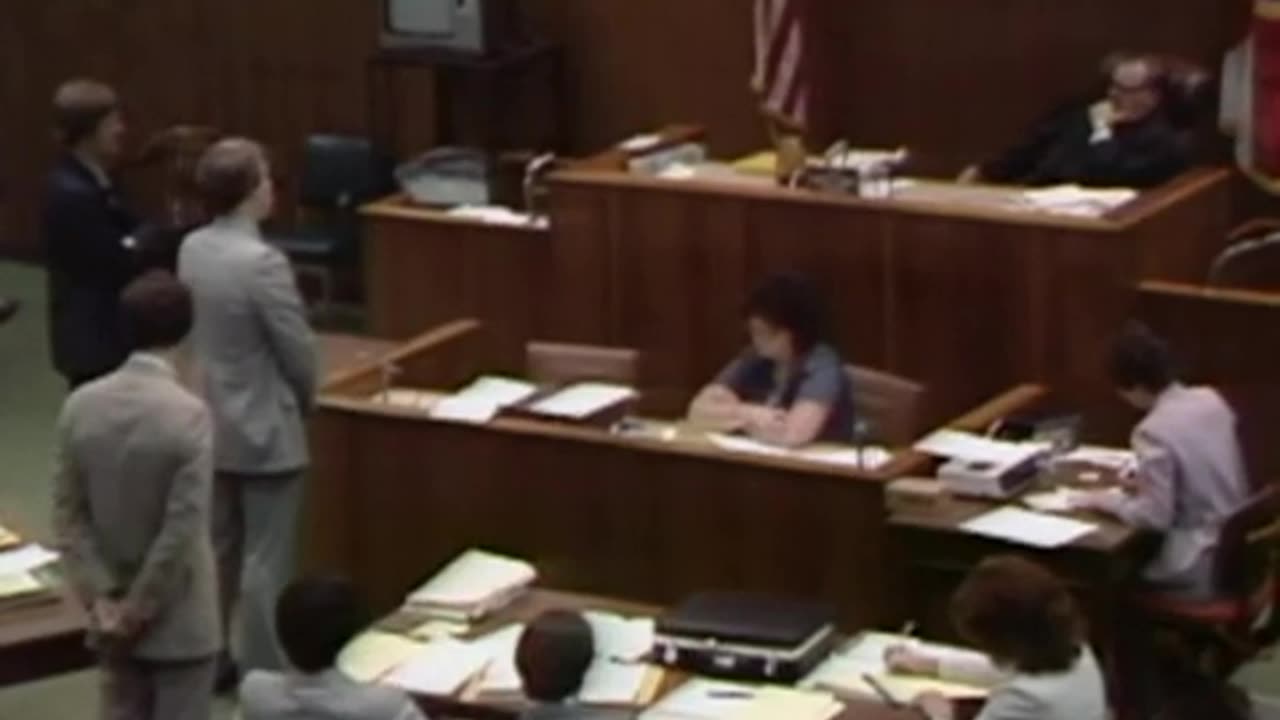
The Ted Bundy Trials - Part 1 (1978 to June 1979)
The dark side of history: https://thememoryhole.substack.com/
Theodore Robert Bundy (né Cowell; November 24, 1946 – January 24, 1989) was an American serial killer who kidnapped, raped, and murdered dozens of young women and girls during the 1970s and possibly earlier. After more than a decade of denials, he confessed to 30 murders committed in seven states between 1974 and 1978. Bundy's true victim total is unknown.
Bundy typically simulated having a physical impairment such as an injury to convince his target that he was in need of assistance, or would dupe her into believing he was an authority figure. He would then lure his victim to a vehicle parked in a more secluded area, at which point he would bludgeon her unconscious, then restrain her with handcuffs before driving his victim to a remote location to be sexually assaulted and killed. He frequently revisited the bodies of those he abducted, grooming and performing sex acts on the corpses until decomposition and destruction by wild animals made further interactions impossible. He decapitated at least 12 of his victims, keeping their severed heads as mementos in his apartment. On a few occasions, he broke into homes at night and bludgeoned, maimed, strangled and/or sexually assaulted his victims in their sleep.
In 1975, Bundy was arrested and jailed in Utah for aggravated kidnapping and attempted criminal assault. He then became a suspect in a progressively longer list of unsolved homicides in several states. Facing murder charges in Colorado, Bundy engineered two dramatic escapes and committed further assaults in Florida, including three murders, before being recaptured in 1978. For the Florida homicides, he received three death sentences in two trials, and was executed in the electric chair at Florida State Prison in Raiford on January 24, 1989.
Biographer Ann Rule characterized him as "a sadistic sociopath who took pleasure from another human's pain and the control he had over his victims, to the point of death and even after." Bundy once described himself as "the most cold-hearted son of a bitch you'll ever meet", a statement with which attorney Polly Nelson, a member of his last defense team, agreed. "Ted", she wrote, "was the very definition of heartless evil."
Early life and education
Childhood
Ted Bundy was born Theodore Robert Cowell on November 24, 1946, to Eleanor Louise Cowell (1924–2012) at the Elizabeth Lund Home for Unwed Mothers in Burlington, Vermont. His biological father's identity has never been confirmed; his original birth certificate apparently assigns paternity to a salesman and United States Air Force veteran named Lloyd Marshall, though a copy of it listed his father as unknown. Louise claimed she met a war veteran named Jack Worthington, who abandoned her soon after she became pregnant. Census records reveal that several men by the name of John Worthington and Lloyd Marshall lived near Louise when Bundy was conceived. Some family members expressed suspicions that Bundy was sired by Louise's own father. However, in the 2020 documentary film Crazy, Not Insane, psychiatrist Dorothy Otnow Lewis claimed she received a sample of Bundy's blood and that a DNA test had confirmed that Bundy was not the product of incest.
For the first three years of his life, Bundy lived in the Northeast Philadelphia's Roxborough neighborhood, with his maternal grandparents, Samuel Knecht Cowell (1898–1983) and Eleanor Miriam Longstreet (1895–1971) who raised him as their son to avoid the social stigma that accompanied birth outside of wedlock at that time. Family, friends, and even young Ted were told that his grandparents were his parents and that his mother was his older sister. Bundy eventually discovered the truth about his family, although his recollections of the circumstances varied; he told a girlfriend that a cousin showed him a copy of his birth certificate after calling him a "bastard,"[19] but he told biographers Stephen Michaud and Hugh Aynesworth that he had found the certificate himself.[13] Biographer and true crime writer Ann Rule, who knew Bundy personally, wrote that he did not find out until 1969, when he located his original birth record in Vermont.[20] Bundy expressed a lifelong resentment toward his mother for never telling him about his real father, and for leaving him to discover his true parentage for himself.[21]
Bundy occasionally exhibited disturbing behavior at an early age. Louise's younger sister, Julia Cowell, recalled awakening from a nap to find herself surrounded by knives from the kitchen, and her 3-year-old nephew standing by the bed, smiling.[22] In some interviews, Bundy spoke warmly of his grandparents[23] and told Rule that he "identified with," "respected," and "clung to" his grandfather.[24] In 1987, however, he and other family members told attorneys that Samuel was a tyrannical bully who beat his wife and dog, swung neighborhood cats by their tails, and expressed racist and xenophobic attitudes. In one instance, Samuel reportedly threw Julia down a flight of stairs for oversleeping.[25] He would sometimes speak aloud to unseen presences,[26] and at least once flew into a violent rage when the question of Bundy's paternity was raised.[25] Bundy described his grandmother as a timid and obedient woman who periodically underwent electroconvulsive therapy for depression[26] and feared to leave their house toward the end of her life.[27]
These descriptions of Bundy's grandparents have been questioned in more recent investigations. Some locals remembered Samuel as a "fine man" and expressed bewilderment at the reports of him being violent. "The characterization that [Sam] was a raging alcoholic and animal abuser was a convenient characterization used to make people justify why Ted was the way he was," said one of Bundy's cousins. "From my limited exposure to him, nothing could be farther from the truth. His daughters loved him dearly and had nothing but fond memories of him." In addition, Louise's sister, Audrey Cowell, stated that their mother could not leave her home because she suffered a stroke due to being overweight and was not mentally ill.[28]
Bundy as a high school senior in 1965
In 1950, Louise changed her surname from Cowell to Nelson[29] and, at the urging of multiple family members, left Philadelphia with Ted to live with cousins Alan and Jane Scott in Tacoma, Washington.[30][31] In 1951, Louise met Johnny Culpepper Bundy (1921–2007), a hospital cook, at an adult singles night at Tacoma's First Methodist Church.[32] They married later that year and Johnny formally adopted Ted.[32] Johnny and Louise conceived four children together, and though Johnny tried to include his adopted son in camping trips and other family activities, Bundy remained distant from him. He would later complain to a girlfriend that Johnny "was not his real father", "wasn't very bright," and "didn't make much money."[33]
Bundy varied his recollections of Tacoma in later years. To Michaud and Aynesworth, he described roaming his neighborhood, picking through trash barrels in search of pictures of naked women[34] and to attorney and author Polly Nelson he said that he perused detective magazines, and crime novels for stories that involved sexual violence, particularly when the stories were illustrated with pictures of dead or maimed women.[35] In a letter to Rule, however, he asserted that he "never, ever read fact-detective magazines, and shuddered at the thought that anyone would."[36] He once told Michaud that he would consume large quantities of alcohol and "canvass the community" late at night in search of undraped windows where he could observe women undressing, or "whatever [else] could be seen."[37] Psychologist Al Carlisle claimed that Bundy "started fantasizing about women he saw while window peeping or elsewhere [and] mimicking the accents of some politicians he listened to on the radio. In essence, he was fantasizing about being someone else, someone important."[31]
Bundy's childhood Tacoma neighbor Sandi Holt described him as a bully and a "mean-spirited kid". "He liked to terrify people ... He liked to be in charge. He liked to inflict pain and suffering and fear."[31] She also alleged that Bundy engaged in animal cruelty: "He hung one of the stray cats in the neighborhood from one of the clothes lines in the backyard, doused it in lighter fluid and set it on fire and I heard that cat squealing."[31] She claimed that Bundy would take younger children in the neighborhood into the woods and terrorize them. "He'd take them out there and strip them down, take their clothes," she said. "You'd hear them screaming for blocks, I mean no matter where we were here, we could hear them screaming."[31] Holt added that Bundy built makeshift punji traps around his neighborhood, injuring at least one girl. "One little girl went over the top of one of Ted's tiger traps and got the whole side of her leg slit open with the sharpened point of the stick that she landed on."[31][38]
Accounts of Bundy's social life also varied. He told journalists Michaud and Aynesworth that he "chose to be alone" as an adolescent because he was unable to understand interpersonal relationships;[39] he also claimed to have no natural sense of how to develop friendships. "I didn't know what made people want to be friends," Bundy said. "I didn't know what underlay social interactions."[40] "Some people perceived me as being shy and introverted," he said. "I didn't go to dances. I didn't go on the beer drinking outings. I was a pretty, you might call me straight, but not a social outcast in any way."[31] Classmates from Woodrow Wilson High School, however, told Rule that Bundy was "well known and well liked" there, "a medium-sized fish in a large pond."[41] Bundy's only significant athletic avocation was downhill skiing, which he pursued enthusiastically with stolen equipment and forged lift tickets.[13] During high school, he was arrested at least twice on suspicion of burglary and motor vehicle theft. When he was 18 years old, the details of the incidents were expunged from his record, as is customary in Washington and many other states.[42]
University years
After graduating from high school in 1965, Bundy attended the University of Puget Sound (UPS) for one year before transferring to the University of Washington (UW) to study Chinese.[43] In 1967, he became romantically involved with a UW classmate, Diane Edwards (identified in Bundy biographies by several pseudonyms, most commonly Stephanie Brooks).[44] Bundy later described Edwards as "the only woman I ever really loved."[45]
In early 1968, Bundy dropped out of college and worked a series of minimum-wage jobs. He also volunteered at the Seattle office of Nelson Rockefeller's presidential campaign[46] and became Arthur Fletcher's driver and bodyguard during Fletcher's campaign for Lieutenant Governor of Washington State.[47] Edwards graduated in the spring of 1968 and left Washington for San Francisco. Bundy visited her later that year after he earned a scholarship to study Chinese at Stanford University that summer.[48]
In August, Bundy attended the 1968 Republican National Convention in Miami.[49] Shortly thereafter, Edwards ended their relationship and returned to her family home in California, frustrated by what she described as Bundy's immaturity and lack of ambition. Psychiatrist Dorothy Otnow Lewis would later pinpoint this crisis as "probably the pivotal time in his development".[50] Devastated by the breakup, Bundy traveled to Colorado and then farther east, visiting relatives in Arkansas and Philadelphia and enrolling for one semester at Temple University.[51] It was also at this time in early-1969, Rule believed, that Bundy visited the office of birth records in Burlington and confirmed his true parentage.[51][52]
Bundy was back in Washington by the fall of 1969, when he met Elizabeth Kloepfer (identified in Bundy literature as Meg Anders, Beth Archer, or Liz Kendall), a single mother from Ogden, Utah, who worked as a secretary at the UW School of Medicine.[53] Their tumultuous relationship would continue well past his initial incarceration in Utah in 1976.[54] Bundy became a father figure to Kloepfer's daughter Molly, who was 3 years old when he started dating her mother; he remained in her life until she was aged 10, after he had been arrested. As an adult, Molly wrote of incidents beginning at age 7 in which Bundy was abusive or sexually inappropriate with her. Her accounts include Bundy hitting her in the face, knocking her down, putting her at risk of drowning, indecent exposure, and sexual touching disguised as accidents or "games".[55]
In mid-1970, Bundy, now focused and goal-oriented, re-enrolled at UW, this time as a psychology major. He became an honor student and was well regarded by his professors.[56] In 1971, he took a job at Seattle's Suicide Hotline Crisis Center. There, he met and worked alongside Ann Rule, a former Seattle police officer and aspiring crime writer who would later write one of the definitive Bundy biographies, The Stranger Beside Me. Rule saw nothing disturbing in Bundy's personality at the time; she described him as "kind, solicitous, and empathetic."[57]
After graduating from UW in 1972,[58] Bundy joined Governor Daniel J. Evans's re-election campaign.[59] Posing as a college student, he shadowed Evans' opponent, former governor Albert Rosellini, and recorded his stump speeches for analysis by Evans's team.[60][61] Evans appointed Bundy to the Seattle Crime Prevention Advisory Committee.[62] After Evans was re-elected, Bundy was hired as an assistant to Ross Davis, Chairman of the Washington State Republican Party. Davis thought well of Bundy and described him as "smart, aggressive ... and a believer in the system."[63] In early-1973, despite mediocre LSAT scores, Bundy was accepted into the law schools of UPS and the University of Utah on the strength of letters of recommendation from Evans, Davis, and several UW psychology professors.[64][65]
During a trip to California on Republican Party business in the summer of 1973, Bundy rekindled his relationship with Edwards. She marveled at his transformation into a serious and dedicated professional, seemingly on the cusp of a significant legal and political career. Bundy continued to date Kloepfer as well; neither woman was aware of the other's existence. In the fall of 1973, he matriculated at UPS Law School,[66] and continued courting Edwards, who flew to Seattle several times to stay with him. They discussed marriage; at one point he introduced her to Davis as his fiancée.[33]
In January 1974, Bundy abruptly broke off all contact with Edwards; her phone calls and letters went unreturned. When she finally reached him by phone a month later, she demanded to know why he had unilaterally ended their relationship without explanation. In a flat, calm voice, he replied, "Diane, I have no idea what you mean," and hung up. She never heard from him again.[67] Bundy later explained, "I just wanted to prove to myself that I could have married her";[68] but Edwards concluded in retrospect that "Ted's high-power courtship in the latter part of 1973 had been deliberately planned, that he had waited all those years to be in a position of where he could make her fall in love with him, so that he could drop her, reject her, as she had rejected him."[67] By then, Bundy had begun skipping classes at law school. By April, he had stopped attending entirely,[69] as young women began to disappear in the Pacific Northwest.[70]
First murders
There is no consensus as to when or where Bundy began killing women. He told different stories to different people and refused to divulge the specifics of his earliest crimes, even as he confessed in graphic detail to dozens of later murders in the days preceding his execution.[71] He told Nelson that he attempted his first kidnapping in 1969 in Ocean City but did not kill anyone until sometime in 1971 in Seattle.[72] He told psychologist Art Norman that he killed two women in Atlantic City while visiting family in Philadelphia in 1969.[73][74] Bundy hinted to homicide detective Robert Keppel that he committed a murder in Seattle in 1972[75] and another murder in 1973 that involved a hitchhiker near Tumwater, but he refused to elaborate.[76] Rule and Keppel both believed that he might have started killing as a teenager.[77][78] Bundy's earliest documented homicides were committed in 1974, when he was 27. By his own admission, he had by then mastered the necessary skills – in the era before DNA profiling – to leave minimal incriminating forensic evidence at crime scenes.[79]
-
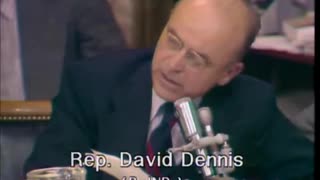 9:22:13
9:22:13
The Memory Hole
3 months agoNixon Impeachment Hearings Day 4 (1974-07-26)
718 -
 11:34
11:34
Mrgunsngear
18 hours ago $0.73 earnedSiege Suppressors ROC556 Low Backpressure Silencer Review 🤫
5.07K5 -
 30:57
30:57
Clownfish TV
4 hours agoDisney Drops DEI and Goes PRO-AMERICA?!
5.27K16 -
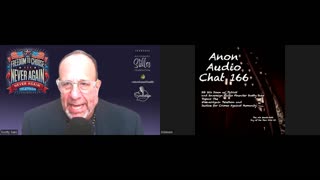 17:35
17:35
QNewsPatriot
18 hours ago(4/25/2025) | AUDIO CHAT 166 | SG Sits Down w/ Sovereign Radio Founder Scotty Saks: Vaxx Lawsuits and the #NeverAgain Telethon
15.7K13 -
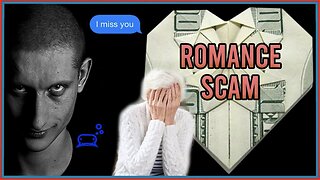 19:51
19:51
CatfishedOnline
2 hours agoSpouse Sends $50,000 To A Man Who Doesn't Exist 😱
3.8K1 -
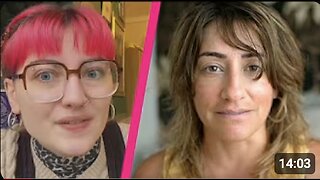 11:59
11:59
ariellescarcella
17 hours agoThe Dark Side Of "Queer Joy"
2.83K7 -
 1:12:39
1:12:39
Squaring The Circle, A Randall Carlson Podcast
1 day ago#045 What Are The Structures Beneath The Great Pyramids in Giza? Squaring the Circle: A Randall Carlson Podcast
6.07K2 -
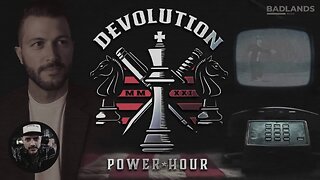 2:08:05
2:08:05
Badlands Media
1 day agoDevolution Power Hour Ep. 349: Trump’s Geopolitical Gambits, Sports Psyops, and the Regime’s Unraveling
116K107 -
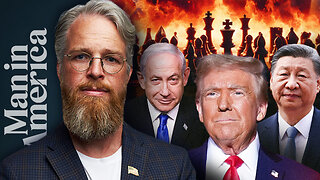 1:08:36
1:08:36
Man in America
19 hours agoUS, China, Israel & the Battle for the New World Order w/ Boone Cutler
134K138 -
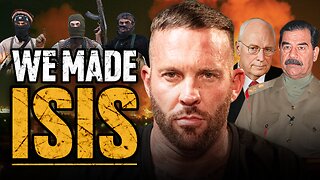 2:37:49
2:37:49
The Connect: With Johnny Mitchell
1 day ago $14.76 earnedBlackwater Mercenary EXPOSES Private Military War Secrets From The Middle East, Fueling Terrorism
64.4K67